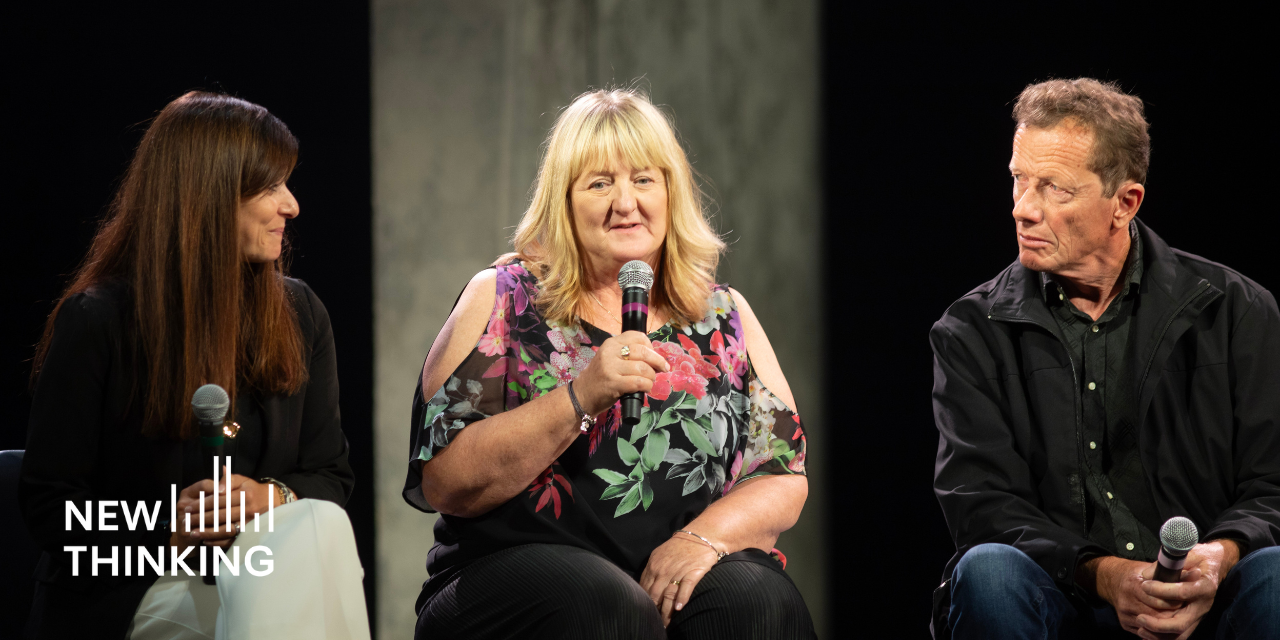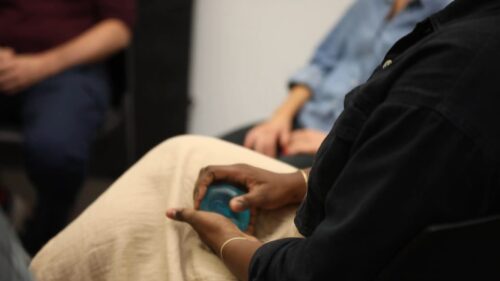Judge Nicolette Pach developed and presided over New York State’s first Family Treatment Court, which began in 1997 in Suffolk County. Currently, she is a Judicial Fellow for the National Drug Court Institute, a consultant to the National Center on Substance Abuse and Child Welfare and provides technical assistance to jurisdictions grappling with the difficult issues of collaboration with the courts.
How is family treatment court different from regular drug court?
It has a different mission. The reason that the court is permitted to become involved in the lives of these families is 1) for child safety, and 2) to try to reunify the family if possible and, if not, to make sure that the child has a permanent safe and stable home. You have a very short time frame in which to do that, so you’re not just concerned with parental sobriety. You have to look at all of the needs of the child—development needs, health needs, housing needs—and make sure that the child is in a condition to go home if the parent’s ready to take him or her. These parents have to be able to live a safe and stable life. They’ve got to be able to work for a living.
The criminal courts are beginning to look at a broader range also, with vocational programs for their clients and those kinds of things. But Family Court has to be concerned with the functioning of the entire family, so it’s a different mission. If you reach a point where the child has to have permanency and the parent isn’t ready, then the priority has to switch away from the parent and their sobriety and to the child’s needs.
How do you balance recovery of the parent against the interests of the children?
The interest of the child has to come first. There’s just no question about it.
Is it always clear where that line is?
No, by no means. There are so many variables. It varies with the age of the child. The 10-year-old who’s had 10 years of living with his parent has an attachment to those parents, for better or worse. That can’t be denied. So if the parent is able to get it together for six to eight months in the treatment court but then relapses, when the time comes for permanency hearing you may realize that the relationship is so strong it would be too detrimental to the child to terminate it. If the parent seems to be trying, we may decide we’re not going to go that direction and need to find something else that’s in the child’s benefit. With a brand new baby, in those same circumstances, who’s only known their foster home, it may be devastating to take him or her away from the foster family and back into the birth family. So you have to look at what the law requires of you, and you have to look at each child individually.
How effective have family treatment courts been, in your opinion?
I think there has been much more success than business as usual, especially in keeping close track of what’s happening with the children so that they’re not lingering in foster care or without stability. [In Suffolk County,] we had a 77 percent compliance rate, which is just unheard of. We graduated somewhere over 100 graduates by the time I left, so 77 percent [of parents] had either graduated or were doing what they were supposed to be doing—staying in treatment, staying clean and sober. It also was successful in terms of being more rewarding for the people working with the families.
What do you think was the key to that success?
Close contact, not only with the judge but with the case managers, the child protective workers. There are a lot of eyes on each case and a lot of support surrounding the participants. Before, a participant might be given a list that says here are the treatment providers you can go to, and then maybe that person sees a caseworker the next month at their visit but nobody’s looking at the barriers to their staying in compliance. By contrast, we had a lot of opportunity to look at what’s going to help this person succeed. Do we need Child Protective Services to help us pay for child care? Can we get them into a treatment program that has transportation and child care on site? Do they have vocational skills? Those kinds of things could be looked at very closely. If the case plan needed tweaking, if new services were needed, we could do it.
In your court, did sanctions and rewards work the same way they do in an adult drug court?
In a family treatment court the motivation is different and so the sanctions have to be different, although some of the same sanctions and incentives can be used. Sometimes the sanction would be a word from the bench just as you see in a criminal drug court. Other times it would be an essay, but the essay topic would be family-focused, like: What do you think the impact was of your missing your visit with your child on your child? We used some rewards when they got to certain points in the program. For instance, at one point they got a book of meditations and at another they got a nice keychain. One of our not-for-profit partners would sometimes get tickets to the circus or other kinds of things like that. And when I was running the treatment court, my neighbors put together Thanksgiving dinners for all the families. So the families knew they had support, and that was a big incentive.
In our court we used jail time occasionally. If they didn’t show up in court, we had the power to issue a bench warrant. The sheriff was very cooperative, willing to spend the time and energy necessary to go out and find these parents and bring them back in. But more often we would use therapeutic essays and those kinds of things as sanctions. Sometimes we would not use a sanction but instead, as a response to what was going on, have the person who did our assessments take a look at the participant’s treatment level. Was it sufficient to meet this person’s needs or did they need to be moved up a step in order to get a grip on what was going on?
So it is the same and it’s not the same. I think in adult drug courts they talk about their breakout time or whatever it is—you screw up so much and you’re going to go to jail for so long. Well you don’t have that. In the family court, if you can’t manage to get your life in order, somebody else is going to raise your children. But that’s not a sanction. It’s a consequence of what’s going on.
What do you see as the future of family treatment courts?
I think we’re going to need to have a group of leaders in family drug courts come together and talk about the essential characteristics of a family treatment court and ask questions about incarceration and permanency and so on. We need to come to some kind of consensus in the field so that we can help courts develop their own standards.
Another thing that I hear from the child welfare side—and I agree with it—is that there’s more of a need to be family-based and family-focused, and by that I mean that first of all we need to make sure that we’re listening to the families about what they think is going to help them. Too often professionals have tried to make an assessment of a family with their expertise and training, rather than have a conversation with the family to see what the family thinks it can accomplish and how it can accomplish it. And in the treatment community, too, you’re hearing more about family-based treatment, the need for substance abuse treatment agencies to treat substance abuse as a family disease, offering family counseling and family services at the same place that the parent is going for treatment. They need to have the ability to look at the impact of parental substance abuse on children, and address those issues.

